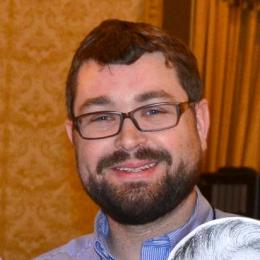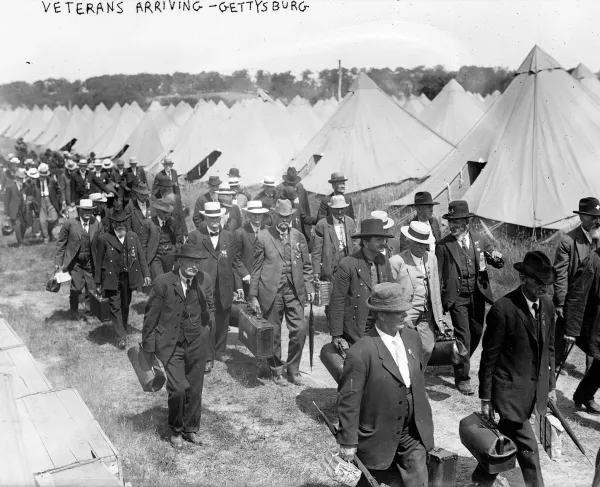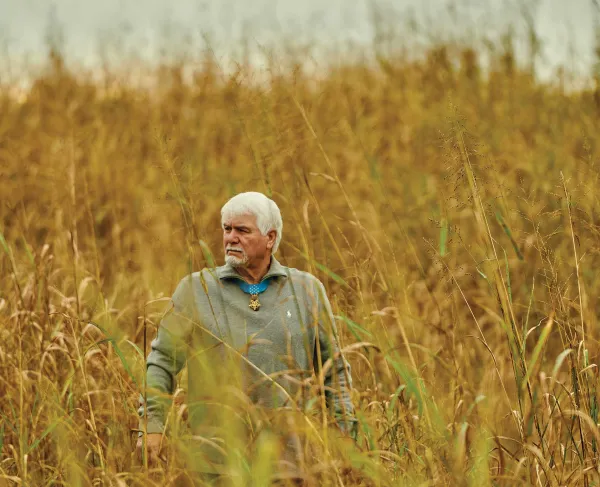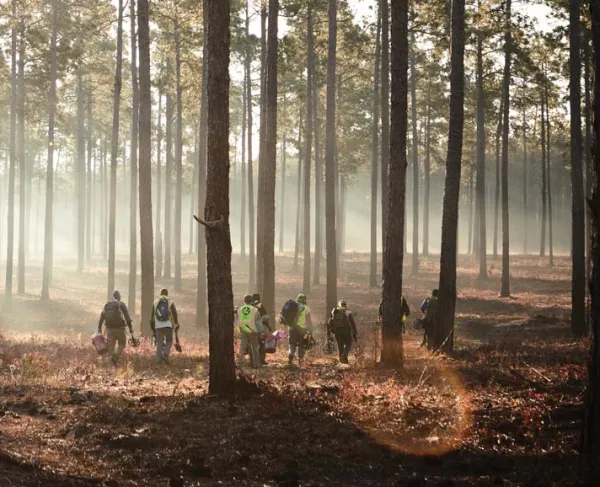Norwich University in Northfield, Vt.
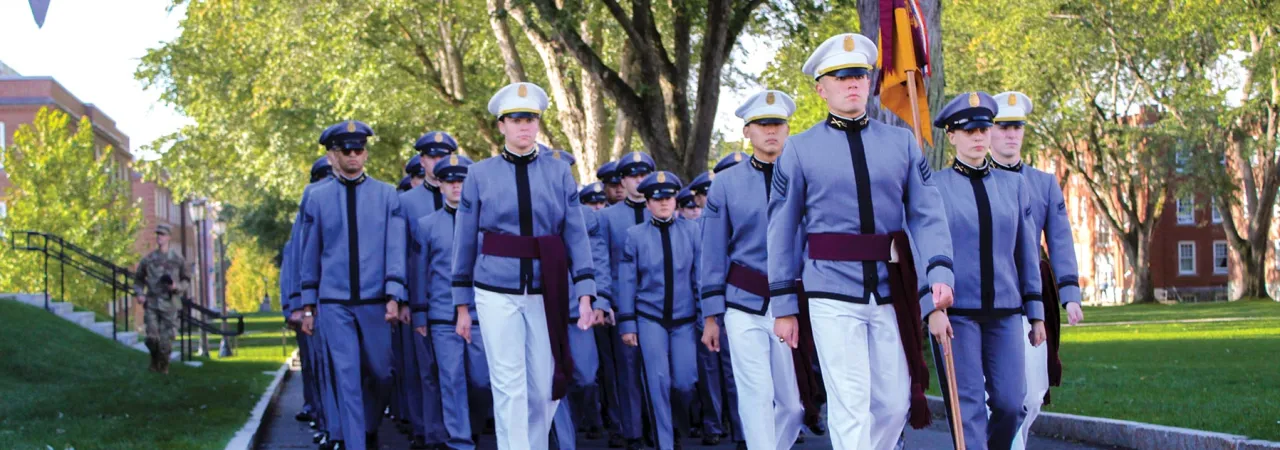
Cadets marching the grounds.
As part of a series on military service academies, Kristopher D. White, Class of 2009, reflects on his experience at and the history of Norwich University in Northfield, Vt.
History buffs love to know where you attended college. It is the inevitable conversation at any round table meeting or when you are leading a tour. My alma maters usually elicit the same reactions from an audience. For my undergrad, California University of Pennsylvania, their reaction is, “Is that a real place?” Indeed, it is — the “Harvard on the Mon” is older than the actual state of California. And for my graduate degree, Norwich University, the response is normally, “It’s that online school, right?” Or, as many people think, including my mother, “That’s that school in Connecticut, correct?” Well, yes and no.
Norwich University is the oldest private military college in the United States (take that VMI, we are older), and is today located in Northfield, Vt. But this was not always the case. Norwich was founded by Aldan Partridge, an 1806 graduate of West Point and a former instructor at and superintendent of the academy. After a falling out with the army, Partridge founded his own military academy in August of 1819 (and, subsequently, a few other institutions). He believed in the idea of the citizen-soldier, supporting well-trained and regulated militias and both rigorous physical and intellectual training for America’s growing officer corps.
Over time, the school moved from Vermont to Connecticut and then back to Vermont. Class sizes grew and shrank in size as it overcame poor enrollment, a devastating fire and the shock of the American Civil War. From America’s western expansion to the continuing War on Terror, Norwich has provided the nation with well trained and innovative military and civilian leaders. It is the oldest and the only one of the six senior military colleges located north of the Mason Dixon Line and is the “Birthplace of ROTC.” Where else can you attend a college football game with a Sherman tank sitting on the sidelines or walk to class past a 47-mm Hotchkiss gun used in the Spanish American War, or take a moment and reflect at the “Gold Star Families Memorial Monument”?
Norwich is a special place for all alumni. Its motto is “I will try” — a phrase that I use on a daily basis.
More than 750 Norwich attendees served in the American Civil War, with at least 56 serving on the side of the Confederacy. Of those wearing Union blue, four were recipients of the Medal of Honor, including Edward Williston, who earned his Medal of Honor at Trevillian Station on land preserved by the members of the American Battlefield Trust.
Other famous attendees and alumni include: Grenville N. Dodge, Grant’s intelligence chief in the Western Theater who went on to Congress and helped create the Transcontinental Railroad; Pierre Garcon, who spent 10 years as an NFL wide receiver; Roxane Gay, Yale professor, writer, editor and social commentator; Ernest N. Harmon, ultimately major general in the Armored Division and most famous for his actions in the WWII Tunisian Campaign; Horatio Seymour, New York governor who ran against Ulysses Grant in the presidential election of 1868; James H. Ward, the first U.S. Navy officer killed in the Civil War; Gideon Welles, Civil War-era secretary of the navy; William G. Wilson, co-founder of Alcoholics Anonymous; and Horatio G. Wright, Union general who lent his engineering skills to the Brooklyn Bridge and Washington Monument after the war.
Other military academies may be larger or more famous, but Norwich has produced leaders who rose to the occasion in all branches of the service on battlefields across the globe — Gettysburg, the Little Big Horn, Manilla Bay, the Bulge, Fallujah and countless other places across the globe where America’s soldiers, sailors, airmen, and Marines were placed in harm’s way.
